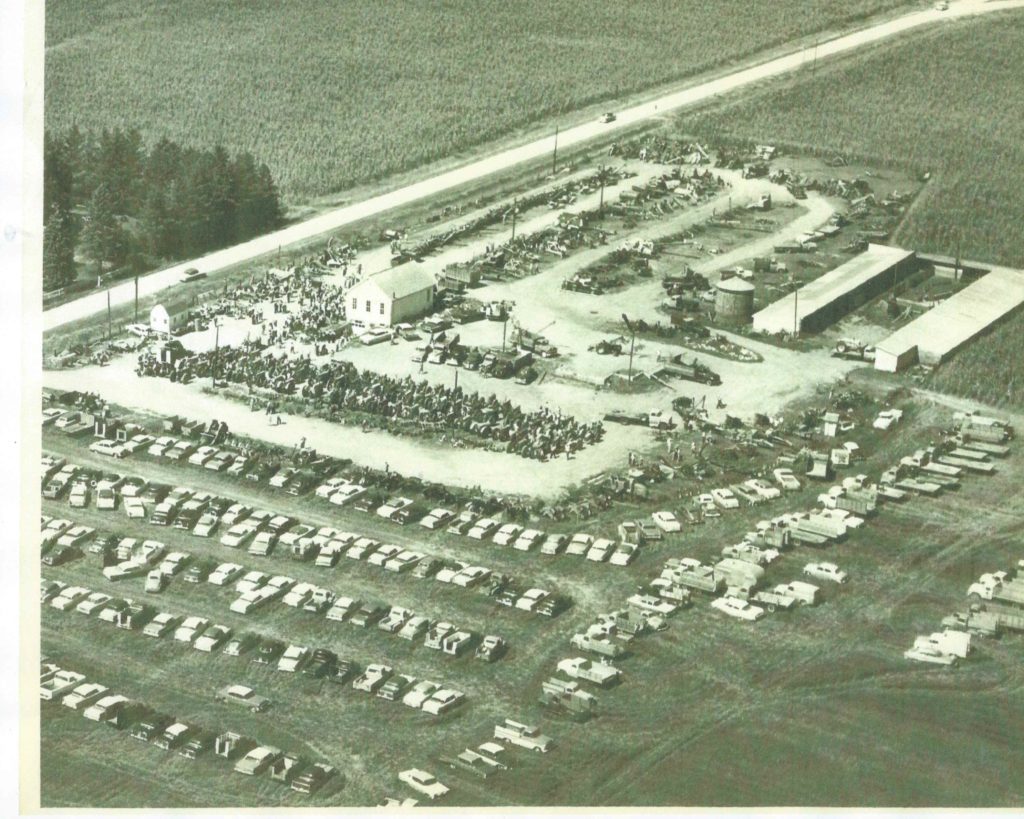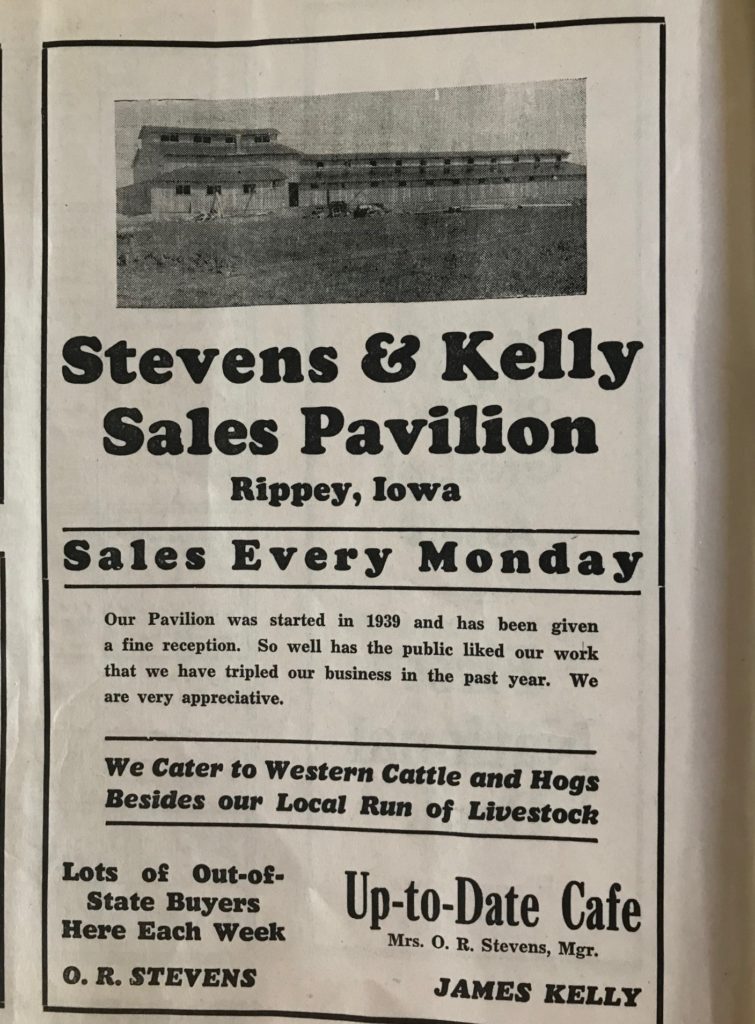What Do You Remember About Rippey?
The Rippey, Iowa, Sesquicentennial will be held on Saturday, August 1, 2020. If you have personal remembrances of Rippey, you are invited and encouraged to share those memorable stories. Just send your remembrance via email and we’ll get it posted on the Rippey News Web site, as well as on Facebook sites of the Friends of Rippey and the Rippey Sesquicentennial. You write down the anecdote or story–a page or two–and we’ll do the rest. Phyllis McElheney Lepke is serving as our volunteer coordinator and stories may be sent to her at Rippey150@gmail.com.
Sale Barn(s)
By Mary Dorris Weaver
Rippey is known for many things: mining, sale barn auctions, baseball, and the BRR (Bike Ride to Rippey).
This remembrance will focus on the livestock and machinery sale barn auctions held in the Rippey community in the 1930’s-50’s.
Most of this material comes from a presentation completed by the late Velda DeMoss, when she gave a program for the monthly meeting of the Greene County Historical Society as it was hosted at the Rippey United Methodist Church. This document covers the auction houses of Stevens and Kelly, and then Stevens and Son. This was originally presented in April of 2005. A full copy of the presentation and pictures are available for review at the Rippey Library.
The sale barn industry in Rippey was started by O. R. (Orrie) Stevens. He had been in the auction business since 1920 when he worked as a “ring man”, a person who took bids from individual buyers and then relayed them to the auctioneer. He had deep roots in Greene County as his grandparents settled two miles west of the current town of Dawson.
In 1939 James Kelly and O.R. Stevens built a sales pavilion 1 ½ miles southwest of Rippey, on the east side of what is now Greene County Road P-46. There was seating capacity for several hundred people, and pens and stalls for hundreds of head of livestock. The first livestock sale was held on Monday, August 21, 1939. Machinery was soon added and the business grew until there were two rings outside the building for machinery, as well as livestock in the pavilion. Some days trucks could not unload until the sold livestock was loaded out by the buyer.
The sale began at noon, and would often last past midnight. At times over $100,000 was generated by the sales.
Orrie traveled to the western states on the Union Pacific railroad the day following a sale to purchase cattle and horses for the next week. He frequented Nebraska, Wyoming, and Colorado. There were no “rent a car” places, or Ubers, so he hitchhiked between appointments. He paid the ranchers cash for the livestock, but denied ever being robbed or seemingly even in danger on these buying excursions. By the end of the week railroad cars of horses and cattle arrived in Grand Junction at the depot livestock pens, to be trucked to the auction pavilion for the next Monday sale.
A café was also housed in the building, called the “Sale in Café.” It was only open on sale day. Frequently persons not associated with the sale would come and eat lunch. It had eight booths and a long lunch counter.
The day after Thanksgiving in November of 1947, the barn was destroyed by fire. The partnership dissolved and Orrie went on alone. A former wooden school house was brought in to serve as the sales office, but there were no further livestock auctions. Since the sale was now handling only machinery, the territory which it served became larger. Machinery was trucked in from Mexico, Mississippi, Colorado, Montana, the Dakotas, Indiana, Ohio, and Kentucky. It enlarged because of the scarcity of machinery following the war, and partially because the Office of Price Administration restricted dealer sale profits. Machinery could be sold at a higher price at the auction than the dealer’s business. The Black Market for machinery thrived in Greene County.
Later Orrie formed a partnership with his son Heman, and continued the operation as Stevens and Son.
While airplanes were sometimes sold at the sale, LaVere Derry recalls up to six planes sitting in his parents’ pasture. They landed on a red clover pasture with a freshly mowed landing strip, and taxied to the Derry farm. Those planes were owned by flying farmers who came to purchase machinery.
Orrie divorced, and his former wife married his former partner, Jim Kelly in 1949. In 1950 Jim Kelly built a sales pavilion 1/2 mile south of Rippey. This pavilion and sheds had room for hundreds of head of livestock and seating for several hundred people. Besides the livestock, an addition was added to the north side of the structure allowing cars to be driven past the buyers. There was also a cafe called the Max-Den Café, named for the grandsons of Orrie Stevens.
Jim Kelly died of a heart attack in 1953 and the sale barn went through a series of unsuccessful owners and managers. The Stevens sale barn closed in 1956.


